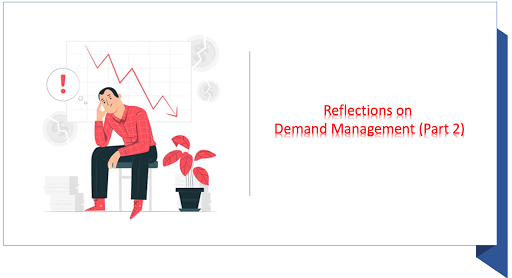The following article is a re-post (with permission) written by Corey Couger Sewpersad. You can find the original article and others on his linkedin page – I will no doubt be making further reposts in the future.
Outbound WFM is not something I have seen a lot of people write content on, and yet still remains an important channel in its own right. In the UK, recent regulation introduced to reduce nuisance calls for customers (and rightly so) has resulted in a volume downturn for this channel, however even in a non-sales environment outbound retains its importance and is differs to inbound in the way you should plan for it.
One extra thing I would add as an important element to incorporate into your outbound WFM process, is optimization around First Party Connect. Corey alludes to this when discussing opportunity to increase performance. Unless you are operating a Predictive Dialer (What is the difference between PREDICTIVE & PROGRESSIVE? Click Here) k
nowing when is the best time to a call customer, analyzing demographics and campaign outcomes will not only improve sales performance but also improve your agent productivity and WFM process.
Corey Couger Sewpersad
Many articles and case studies are published about the benefits of a sound Workforce Management solution in all contact centre types, including outbound contact centres and with the improvements in technology and the shift from ‘calls’ to ‘interactions’, this has made it easier for systems to adapt and easily classify the contact/lead on the dialler as an interaction, which allows the WFM software to forecast for it.
However, in my experience, there is often a misguided approach of trying to implement WFM based on an ‘inbound template’, by simply stating outbound calls as ‘incoming workload’ and trying to forecast in this manner.
The reality is, the outbound call volumes are only a reflection of agent behaviour – it is a view of what they actually did and by using this as the baseline for the forecast, staffing requirements become skewed, workload volumes don’t match and schedules are not aligned – staff then reject the WFM plan and the implementation fails.
To overcome these challenges, the WFM team must understand that each campaign, each channel, each product type must be treated as its own with its own unique workload and its own handle times and find the best way possible to improve the productivity of the contact centre which does not necessarily mean ‘provide schedules’.
Here’s how I applied WFM in an outbound environment:

First, understand the business – create a map of each department, the campaigns they work on, their product and their customer type (target market).
Second, understand the call flow – conduct time studies to segment each step of the call, how long it takes for the agent to navigate the system based on the product they are selling and any wrap up or admin work required afterward.
Third, understand the campaign/marketing plan – get sight of the marketing strategies, campaign rules (how many times are contacts/leads recycled etc.), campaign lifecycle, business sales targets and the average revenue per closed sale.
Fourth, analyse the current workforce stats – the total talk time, calls per agent, conversions and closings, time usage and management, productivity, occupancy and utilisation stats.
By understanding the various product and customer types, we can apply a specific handle time to specific teams in the outbound contact centre, an example: selling an ‘add-on’ benefit to existing customers. These calls will be shorter than those of the actual product being sold so taking an AHT for the entire department may not work, instead, it will have to be broken down by team or ‘product type’. Another example is the customer type, if your target market are individuals above the age of 60, chances are, they will spend more time on the phone as they feel more comfortable ‘speaking to a human’ compared to the younger generation that prefers online and electronic interaction.
The time studies point out some very important factors, the most important one being that you absolutely cannot use a total AHT when calculating staffing. Whether its cold data or hot data, an outbound agent’s AHT will not be accurate as some customers would want a call back at a different time, are driving at that moment or get halfway through the call and realise they don’t have all the information available to complete the sale. To determine the correct staffing, each segment of the call should be categorised and matched back to the performance of the type of campaign being run – therefore it is vital to understand the marketing plan.
Knowing exactly how the department is setup will reveal overflow or multi-skilling opportunities between the teams. It will reveal if a ring-fenced team is actually causing your business harm by being either over or under staffed and depending on the ‘best time to sell’ data, you can use your resources on multiple campaigns throughout the day.
Putting all these together, highlighted two very important statistics for me: 1) The percentage gap between how many sales can be produced and how many are actually produced, 2) Why there is a gap and what can I focus on to close that gap.
In my case study, I found the overall opportunity to increase performance was 12% which then increased the potential number of sales by 9% – an additional 38 sales per day! The increase in performance was an amount of ‘workable time’ that was being lost due to a number of things, like processes, structure, design of the department, lack of skilling options etc. which all came to light while doing the analysis after collecting all the data. Each identified problem had an impact on ‘workable time’ and by resolving the ones we could, it increased the ‘workable time’ which increased Productivity as well as help put an accurate staffing cost to each campaign – business now had sight of the cost of generating the contact/lead and the amount of time spent working that lead, related back to a staffing cost.
For me, WFM in an outbound contact centre is focused around WFM Analytics – knowing the true output capacity of the contact centre with the performance of the campaigns being run and being able to match the two in a way that focuses on the business goals.
This method has proven to work in various other outbound departments that I have worked on and I am sure there are other methods and if a something else worked for you, or you have any comments, please share them with me.






Responses